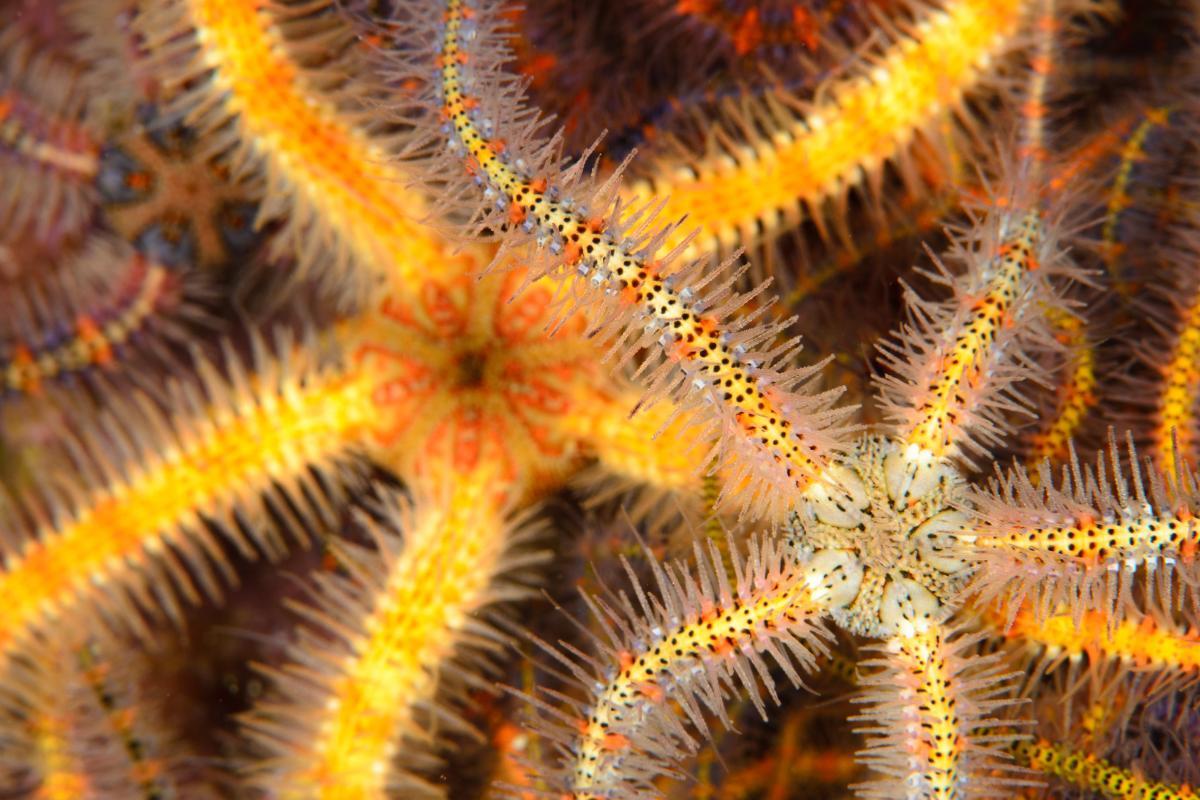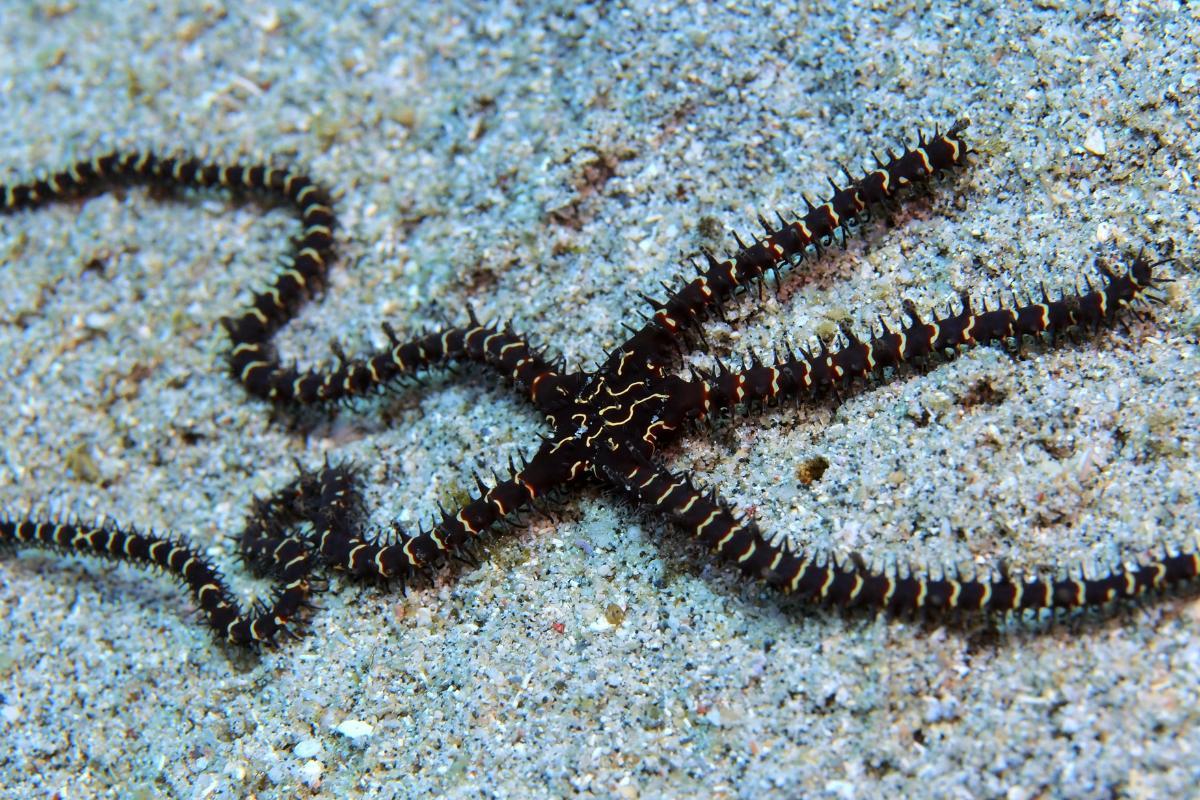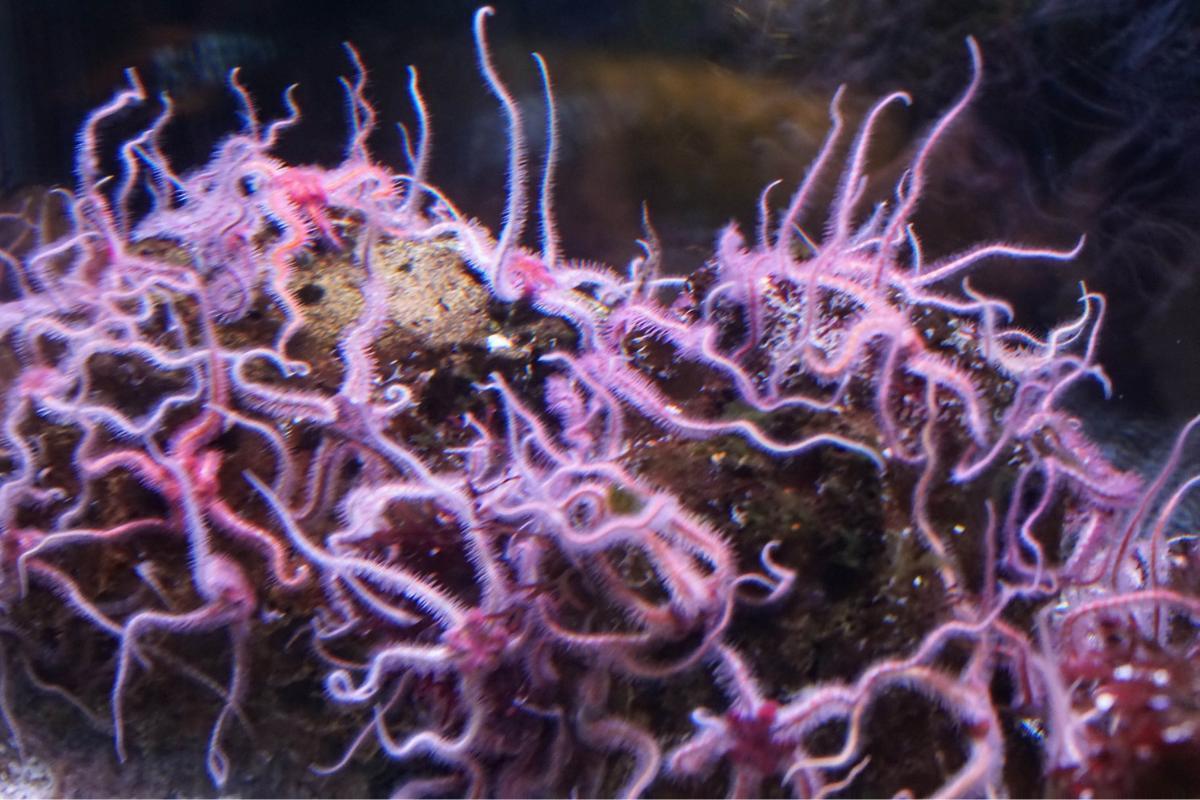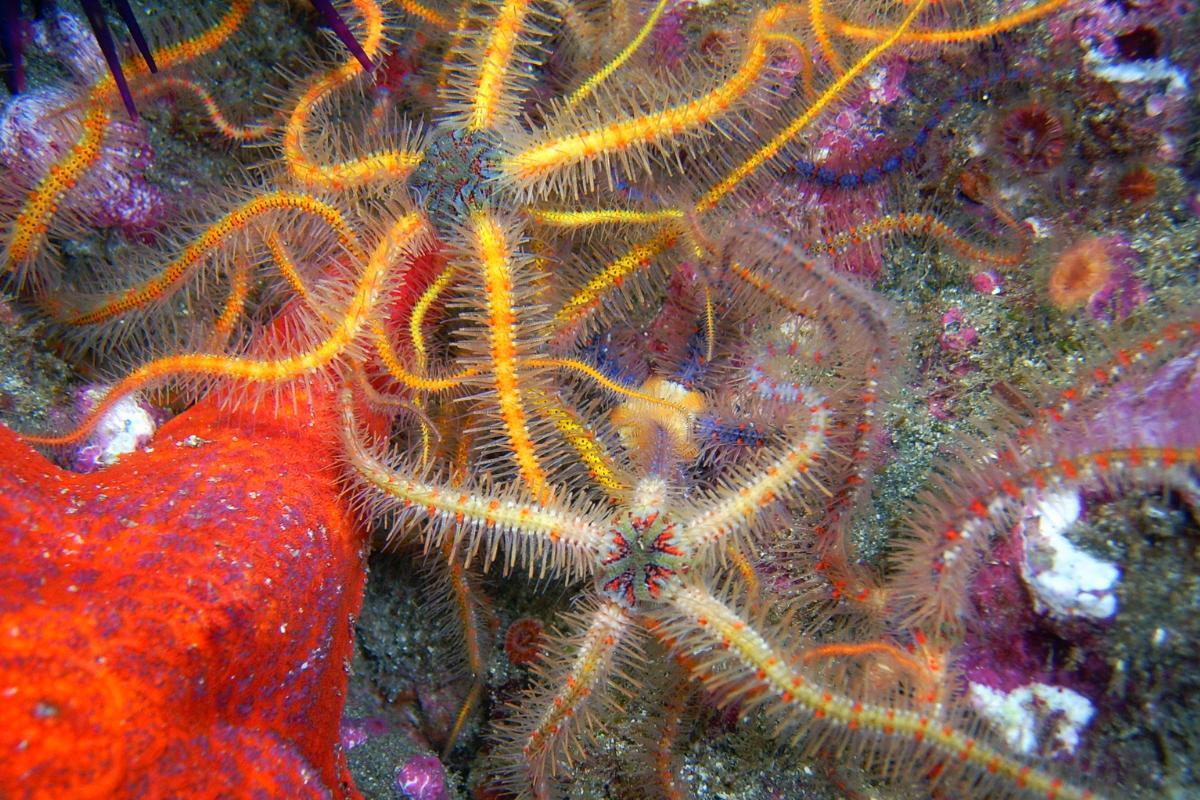What Are Brittle Stars?


Brittle stars are organisms very similar to starfish, belonging to the echinoderm class Ophiuroidea. They are exclusive to marine environments, mostly found on sandy or rocky bottoms, as well as in coral reefs. Their populations are distributed across the world, ranging from very deep ocean trenches to shallow coastal areas. As opportunistic feeders, brittle star nutrition is derived from various sources depending on their specific habitat. With thedailyECO, we look more at the characteristics and behaviors of certain species by asking what are brittle stars?
What are brittle stars?
Brittle stars are marine organisms that look very similar to starfish. This is no coincidence since they are both closely related in terms of evolution. Both are of the phylum Echinodermata, but brittle stars make up the class Ophiuroidea. The name of this class derives from ancient Greek, with ophis meaning ‘serpent’ and ura meaning ‘tail’. This alludes to the movement of their long, thin arms which is reminiscent of the slithering of a snake. For this reason, they are also known as serpent stars.
The reason members of this class are known as brittle stars is because they are indeed brittle. Their delicate arms break easily when they become entangled with other objects. They are also biological indicators, since their presence in a given location indicates a healthy benthic community in its sediments. If brittle stars are healthy, it is a good sign for the ecosystem.
As with all echinoderms, brittle stars are a type of invertebrate. Learn more with our guide to invertebrate animals with examples.
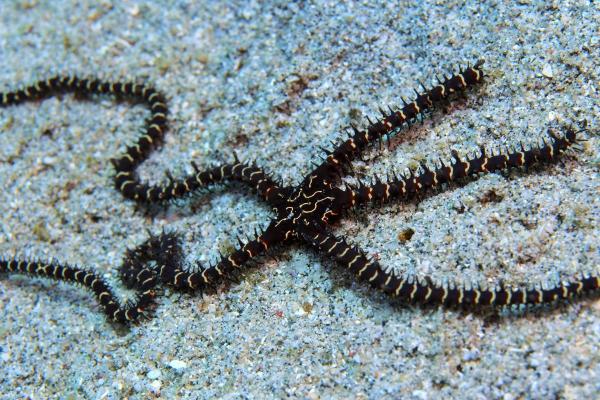
Characteristics of brittle stars
To better understand what are brittle stars, we can look at some of their main characteristics:
- The body structure includes a central disk that houses a calcium carbonate skeleton. Attached to this disk are 5 long and thin arms which can reach up to 24" (60 cm) in length.
- Brittle star arms are highly articulated and have a remarkable capacity for regeneration, allowing them to recover lost limbs when attacked by predators.
- Unlike other echinoderms, brittle stars are capable of rapid movements using their arms. While they have tubular feet, they are less functional than other species of their phylum.
- The ambulacral system is distinguished by having the madreporite located on the oral surface and lacking ampoules.
- The mouth is made up of five mobile plates that function as jaws and its digestive tract is incomplete. Lacking an anus, they excrete through their mouth.
- They have an extraocular photoreception capacity that allows them to detect light and move towards shaded areas when they need to seek refuge.
Brittle star species
There are around 2,000 species of ophiuroids in their class. Below we will describe some of them:
- Brooding snake star (Amphipholis squamata): small with a disc less than 5 mm in diameter and fragile arms. These arms measure four times its diameter and are covered in scales. Each arm has 6 to 8 conical spines.
- Common brittle star (Ophiothrix fragilis): approximately 10 cm in diameter, with subpentagonal disk covered with spicules and seven spines on the lateral plates.
- Basket star (Astrospartus mediterraneus): its large disc has marked grooves and a homogeneous pinkish-brown color with branched arms and granulations.
- Gravel brittle star (Ophiopsila annulosa): species with a small 14 mm disc. Its fragile arms can measure up to ten times the diameter of the disc, with 11-12 flattened spines on the lateral plates.
- Serpent star ( species up to 10 cm in diameter, with short and rigid arms. It is poorly developed brachial spines and they have a gray color with orange tones.
Where do brittle stars live?
Brittle stars inhabit both sandy or rocky bottoms of the sea bed, whether covering intertidal zones or in the deep ocean. They are generally found on the seabed where they move over rocks or mud. Some species dig holes in the sand by undulating their arms. They can hide in these shelters. They can cover their arms in mucus and stick them out of the ground to catch food as it passes.
These creatures are especially common in the Mediterranean Sea and the Atlantic Ocean. This is where they frequent the shores of rocky beaches at shallow depths, hiding among algae or in rock crevices. They can also be associated with seagrass meadows.

What do brittle stars eat?
Brittle star nutrition is based on small organisms and detritus. They can filter this food directly from the water column or actively capture with their five jaws located on the underside of their disk. There are different types of brittle stars depending on their method of feeding:
- Predators: such as those from the genus Ophioderma. They hunt using their arms and flat spines to catch prey such as small worms, mollusks and crustaceans.
- Suspension feeders: such as those from the genus Ophiotrix. They create a network of mucus between their arms to capture food particles that are transported to their mouths.
- Detritivores: can feed on food scavenged from their environment, but may or may not be selective in their food capture.
Reproduction of brittle stars
Most species of brittle stars are dioecious or gonochoric, meaning individuals have separate sexes (either male or female). Their gonads are located in the wall of the bursae, structures which are connected to the coelom.
In some species of hermaphrodite brittle stars, the gonads can be differentiated into male and reproductive organs. Protandry can be observed in these cases. This is where the gametes are released into the water by rupture of the walls of the bursae where fertilization occurs. In addition, brittle stars reproduce asexually, being able to regenerate completely from a single arm.
You can learn more about another hermaphrodite marine animals with our article explaining Platyhelminthes characteristics and examples.

Difference between brittle star and starfish
Although closely related echinoderms, starfish and brittle stars are not the same. We can differentiate between the two by observing the following:
- Brittle stars have five thin arms that emerge abruptly from the central disk, something which distinguishes them from starfish.
- On the oral surface the ambulacral grooves are closed and covered by plates.
- Their tube feet lack suckers, indicating that their primary function is feeding rather than locomotion.
- Each arm of brittle stars is independent and originates from the central disk, while in starfish the arms are interconnected.
- The organs of brittle stars are concentrated in the central disk, including gonads and digestive system. This is unlike starfish where they are distributed throughout the body.
- Their vascular system is simpler, since it lacks valves. Comparatively, starfish have a much more complex system of starfish.
Now that you know better about what brittle stars are, their habitat, nutrition and reproductive capacity, you may want to check out another type of echinoderm species with our article asking what are sea lilies?
If you want to read similar articles to What Are Brittle Stars?, we recommend you visit our Wild animals category.
- National Marine Sanctuary Foundation. (2020). Sea Wonder: Brittle Star.
https://marinesanctuary.org/blog/sea-wonder-brittle-star/ - Shape of life. (n.d.). Deep Sea Brittle Star.
https://www.shapeoflife.org/news/featured-creature/2023/03/27/deep-sea-brittle-star - Burgess, D., & Eagleston, A. (2018). The brittle stars embody nature's fragility...and resilience. Department of Ecology.
https://ecology.wa.gov/blog/march-2018/eyes-under-puget-sound-critter-of-the-month-the





